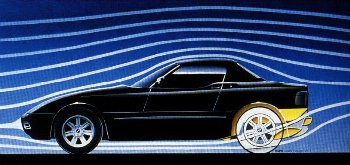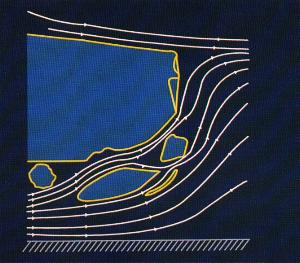tylerma wrote:may be wrong but I read somewhere
the Z1 was originally the test bed for the M20 engine
amongst other things.
Simon13 wrote:they built 7000 or so of them but it seems they are all in long term ownership hence not alot forsale
they are a 325i in drag!
bss325i wrote:The front suspension on z1's was e30 but the rear suspension was the forrunner to the e36's z axel multi link rear end. oddly enough the z3 which followed used e30 type semi trailing arm rear suspension!

I'll answer all these comments (and some of the other comments and questions hopefully?) by giving a brief history of the car so as to clarify exactly
what it is - more importantly
WHY it is and also to inform you of how it affected
ALL subsequent BMW's.....period.
In 1985, BMW hand picked a team of engineers, designers and technicians to form a new 'branch' of BMW called
BMW Technik GmbH
Up until that point, all mass production BMW's were designed and developed the same way....as evolutions of the previous/existing models (this was in terms of both style AND engineering)
BMW already had its Motorsport division which made limited sporting versions of production cars (on some level or another) based on their competition vehicles. Even the M1 was designed as a competition vehicle and was only produced as a road car to meet homologation (SP?) regulations. The same with the M3, M5 etc....
BMW Technik GmbH was a new way forward for BMW. This department was there to solely play with new ideas, techniques and technologies as 'possible' ideas for new production cars and innovative technologies. It was a 'think tank' where the designers could experiment with concepts and not have to worry about them meeting budgets, production levels etc....
Their first brief was to produce a vehicle that could 'showcase' their creativity and imagination and also act as a 'test bed' for developing new technologies that could then be
considered for possible inclusion in actual production models of the future.
In answer to the challenge, they came up with the Z1 - (
Z=Zukunft=Future
1=1st Edition) which was a completley unique vehicle -
NOT a roadster based on an E30 325i which is a common misconception. (so, no....it's not quite a 325i in drag I'm afraid!

)
The TT may be based on a VW Golf platform (and much the same story for many modern 'cross platform' cars) so I can understand where parallels are drawn, but the Z1 was a unique motor from the ground up. The
only parts in common with any other vehicle are the E30 325 engine, gearbox and front suspension. All other parts were unique to this car.
The chassis was made from a purpose built steel 'skeleton' that was fully galvanized and also included zinc welded seams.

The design was such that the vehicle didn't rely on body panels for strength and could be driven without any without loss of rigidity.


Many innovative features were found on this car:
The floorpan/undertray was completely flat so as to help with the aerodynamics. The main floor section is a unique composite panel bonded into the chassis and designed to be smooth, light and very strong. It alone adds 10% to the rigidity of the car!
The designers managed to achieve excellent aerodynamics without resorting to bodykits and spoilers. The car has a special 'concave-convex' section on the bonnet which acts as a spolier in itself, yet just looks like part of the styling. It means the car has negative lift at the front without the use of a specific spoiler.
The exhaust silencer is made in the profile of an aeroplane wing....only upside down. At speed, the air passing along the smooth underside is fed over this and through a large slot in the back bumper. This sucks the back of the car to the road - increasing grip further without the need for large spoilers to ruin the lines of the bodywork. The first production car to achieve negative lift without mechanical aid (ground control fans etc...) or external spoilers.


The bodywork was an experiment to develop a way of producing body panels out of thermoplastic instead of GRP (or conventional steel) The front bumper, wings, sills, doors and rear wings & bumper were all made from injection moulded 'XENOY' plastic which returns to its shape - even after being hit or knocked (unlike GRP or steel) Also light and easy to manufacture. The bonnet, hood cover and bootlid were all made from GRP because they needed to be more rigid due to being opened and closed.

The paint was specially developed to 'flex' with the plastic bodywork. At the time it was the most flexible automotive paint whilst also being one of the first 'green' paints (water based and very low fumes)
A roll-bar is incorporated into the windscreen and is a one-piece metal 'hoop' from the floorpan, right up through the high sills, up the 'A' pillars, across the screen and back down the other side. Intergated to the chassis, is makes superb crash protection and aids rigidity even more!
The rear suspension was a unique 'multi-link' set up designed as a test-bed for future productuoin models. The principal was then used on the new 7 series, 850 and eventually worked its way to the 5 series, tehn 3 series...although the actual set-up on the Z1 still remains unique to the car!
The styling was a new departure for BMW and although the car had the traditional 'kidney' grill, the look of the car was unlike any production car in the range. The styling was later used as the basis for the 8 series - and seeing the two parked next to each other, you realise how much the 850 owes to the Zed.
There are many more unique aspects to the car (did I mention the doors? The only part that people tend to pick up on!

) but I won't go into them now!
Suffice to say - the Z1 was the launch of a new way for BMW to design and develop new technologies and without it (or Technik GmbH), all models since would be less advanced.
Some say it's a 'reskinned' 325i.....but I think you'll agree that there's a little more to it than that!
The engine was chosen because the designers wanted to get the car 'turned around' from drawing to prototype in 12 months (how quick??)and they wanted to spend the time developing the rest of the car - not the engine itself. When you consider the complete package that they came up with, I don't think it was too bad a choice? Better than a faster engine at the expense of handling and style!
Regards,
Bruce.
P.S. Well done if you actually read all that! Can you tell that I'm passionate about the car?



P.P.S. Photos courtesy of Paul Drawmer



















